Sweethearts

Brief Synopsis
Cast & Crew
W. S. Van Dyke Ii
Jeanette Macdonald
Nelson Eddy
Frank Morgan
Ray Bolger
Florence Rice
Film Details
Technical Specs

Synopsis
On the sixth anniversary of the enormously successful Broadway revival of Victor Herbert's operetta Sweethearts , the show's stars, Gwen Marlowe and Ernest Lane, are also celebrating their sixth wedding anniversary. Gwen and Ernest are still very much in love, but are tired of constantly working and yearn for a vacation away from Broadway and constant pressures put upon them by their respective families. Felix Lehman, their friend and producer, is worried that Gwen and Ernest are planning to leave the show to go to Hollywood and work for Norman Trumpett. Lehman has never had a written contract with the couple, and Trumpett has been intriguing them with stories of casual working conditions in Hollywood. During the show's intermission, Ernest sends Gwen a love note, something he has done during every performance, and suggests that they meet after the show in their "special place." Gwen excitedly prepares for their romantic rendezvous, but when Felix plays on their sympathies by saying that he has planned a huge anniversary party for them, they go to the party, then discover that the party is the setting for a radio broadcast. By the time Gwen and Ernest reach home and have to hear additional demands by their families, they are fed up and decide to take Trumpett up on his offer. The next day, while each goes shopping for travel clothes, Leon Kronk, Felix's librettist, comes up with an idea to split the couple and make Hollywood not want them. Leo inserts lines from Ernest's love letters, which he found in Gwen's dressing room, and reads them to Gwen as part of his new play. He then tells Gwen that he has gotten the words from a married man who is in love with another woman. Gwen at first thinks there must be a mistake, but when she sees Ernest secretly slip a note under the bedroom door of Kay Jordan, her secretary, she is convinced of their affair, not knowing that Ernest is merely giving Kay an inscription for an engraved gift for Gwen. Gwen will not listen to reason about Ernest and the two split up. Neither goes to Hollywood; instead, each takes a separate company of Sweethearts on tour. Though they do not call or write, each keeps track of the other by reading stories in Variety . After months of being miserable separated from Ernest, Gwen finally realizes that she has been wrong when Leo's play open on Broadway. Gwen reads the plot in a terrible review in Variety and discovers that Leo has incorporated his trick on her and Ernest into the story. At almost the same moment, Ernest calls her to tell her what a fool he has been and the two decide to reconcile. Back in New York, Gwen and Ernest confront Felix, but find that he still can appeal to their sympathies. Finally, they open in another Broadway revival of Sweethearts , aided by the faithful Kay.

Director
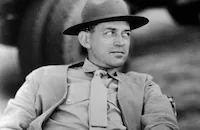
W. S. Van Dyke Ii
Cast

Jeanette Macdonald

Nelson Eddy
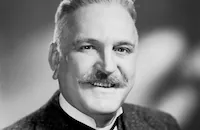
Frank Morgan

Ray Bolger
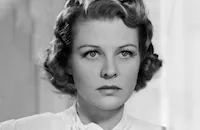
Florence Rice

Mischa Auer

Herman Bing

George Barbier

Reginald Gardiner

Fay Holden
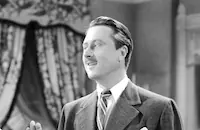
Allyn Joslyn

Lucile Watson

Gene Lockhart
Kathleen Lockhart
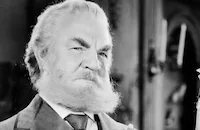
Berton Churchill

Terry Kilburn

Raymond Walburn

Douglas Mcphail

Betty Jaynes
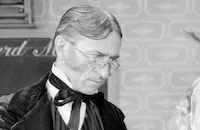
Olin Howland
Dalies Frantz

Irving Bacon
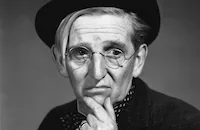
Jimmy Conlin

James Flavin
Hal K. Dawson
Emory Parnell

Toby Wing
Mira Mckinney
Grace Hayle

Barbara Pepper
Patsy "babe" Kane
Philip Loeb
Gerald Hamer
Marvin Jones
Dorothy Gray
Maude Turner Gordon
Jac George
Roger Converse
Reid Kilpatrick
Charles Sullivan
Wilson Benge
George Ernest
Billy Mccullough

Lee Phelps
Pat Gleason
Ralph Malone
Jack Gardner
Ralph W. Berry
Rollin B. Berry
Forrester Harvey
Gayne Whitman
Margaret Irving
Dick Rich
Bruce Mitchell
Ralph Sanford
Richard Tucker
Edwin Stanley
Edward Earle
Lulu May Bohrman
Dorothy Christy
Hal Cooke
Jennifer Gray
Brent Sargent
Suzanne Kaaren
Fred Santley
James Farley
Arthur "pop" Byron
Don Barclay
Joe A. Devlin
Chester L. Berolund
Dick French
Cyril Ring
William Worthington
Estelle Etterre

Bess Flowers
George Cooper
Frank Mills

Mary Howard

Joan Barclay
Sharon Lewis
Vivian Reid
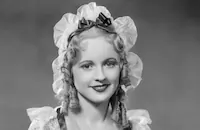
Lucille Brown
Valerie Day
Ethelreda Leopold
Lester Dorr
Anne Wigton
Paul Marquardt
Paul Kerby
Ralph Brooks
Brooks Benedict
Crew
Adrian
Arthur Arling
Sir Henry Rowley Bishop
Hugh Boswell
Alan Campbell
Bob Carney
Nelson Cordes
Allen Davey
D. Eardley-wilmot
Zari Elmassian
Chet Forrest
Cedric Gibbons
Fred De Gresac
John Hamilton
Victor Herbert
Winton C. Hoch
John Hoffman
Henri Jaffa
Natalie Kalmus
Robert J. Kern
Robert Z. Leonard
Herman Lohr
Roger Mace
Paul Marquardt
Oliver T. Marsh
Charles O'malley
Dorothy Parker
John Howard Payne
Laura Perelman
S. J. Perelman
Merrill Pye
Albertina Rasch
Douglas Shearer
William Skall
Harry B. Smith
Robert B. Smith
Ted Stevens
Herbert Stothart
Hunt Stromberg
Slavko Vorkapich
Edwin B. Willis
Bob Wright
Joseph Wright

Videos
Movie Clip



Trailer
Film Details
Technical Specs

Award Nominations
Best Score
Best Sound
Articles
Sweethearts
Sweethearts was Eddy and MacDonald's - and MGM's - first all-color movie. The studio had been slow to follow the expensive trend toward color, trying to get by with devices such as "Sepia Platinum," a brown-toned film stock, or inserting color sequences in otherwise black and white films such as MacDonald's The Cat and the Fiddle (1934). Sweethearts broke with the tradition and set the standard for the many Technicolor musicals to come. In dressing MacDonald, costumer Adrian fearlessly threw aside the fashion rule that redheads should wear only browns, greens and blues. To vivid and flattering effect, he put his star in pinks, yellows and fire-engine red.
Of Nelson and Eddy's eight co-starring vehicles, Sweethearts is also the first to be set in contemporary times. Many mistakenly believe the film to be a version of the Victor Herbert operetta of the same name, but it's actually a Dorothy Parker-Alan Campbell confection about a popular singing duo appearing in a long-running Broadway version of Sweethearts. The movies' Singing Sweethearts do, therefore, get a crack at the Herbert songs. But the real plot concerns the couple's attempt to sidestep their stage chores, and assorted hangers-on, by fleeing to Hollywood.
MacDonald, who had established herself as an outstanding player of light comedy in such films as Ernest Lubitsch's Love Me Tonight (1932), signed with MGM for two films in the early 1930s. Among the studio's first ideas: to co-star her with new star Nelson Eddy in a straight adventure story, The Prisoner of Zenda. Meanwhile, a proposed film version of Naughty Marietta was languishing because the studio couldn't find a suitable leading man for MacDonald. When Zenda failed to materialize, it finally dawned on producer Hunt Stromberg that Eddy and MacDonald were the perfect team for period operettas such as Naughty Marietta (1935), which, when released, put the seal of success on the new singing team. Their other hits included Rose Marie (1936), Maytime (1937) and The Girl of the Golden West (1938). Although MGM purchased the rights to both Show Boat and The Vagabond King as costarring vehicles for the pair, the partnership ended before these proposed films were made. Their final film as a team was MGM's I Married an Angel (1942).
Producer: Hunt Stromberg
Director: W. S. Van Dyke
Screenplay: Dorothy Parker, Alan Campbell, Fred De Gresac, Harry B. Smith, Robert B. Smith Art Direction: Cedric Gibbons, Joseph C. Wright (associate)
Cinematography: Allen M. Davey, Oliver T. Marsh
Costume Design: Adrian
Editing: Robert Kern
Original Music: Herbert Stothart
Non-Original Music: Victor Herbert
Cast: Jeanette MacDonald (Gwen Marlowe), Nelson Eddy (Ernest Lane), Frank Morgan (Felix Lehman), Ray Bolger (Hans), Florence Rice (Kay Jordan), Mischa Auer (Leo Kronk), Herman Bing (Oscar Engel), Reginald Gardiner (Norman Trumpett)
C-115m. Closed captioning.
by Roger Fristoe

Sweethearts
Quotes
Trivia
This is MGM's first feature in full Technicolor.
Notes
The opening credits read: "Metro-Goldwyn-Mayer presents Jeanette MacDonald and Nelson Eddy in Victor Herbert's Sweethearts photographed in Technicolor." The film incorporates many musical numbers from Victor Herbert's operetta Sweethearts, but the present-day setting for the main story was original to the screen. A written epilog to the film states: "In our screenplay certain dramatic liberties have been taken with the operetta Sweethearts; we depict the scenes from the operetta as though it was a recent production currently presented by a wholly ficticious producer Felix Lehman and as composed and written by two wholly imaginary persons Oscar Engel and Felix Lehman whereas the stage operetta Sweethearts was actually written and produced on the stage about 1913; Victor Herbert composing the music and Fred de Gresac, Robert B. Smith and Harry B. Smith writing the book and lyrics."
Sweethearts was M-G-M's first three-strip Technicolor feature film, and the first color film for either Jeanette MacDonald or Nelson Eddy. According to contemporary news items and production charts, filming began on June 17, 1938 in black-and-white. After two days, however, the production was interrupted, all of the black-and-white footage was scrapped and filming began again in Technicolor. Hollywood Reporter news items note that M-G-M decided to make Sweethearts its first Technicolor film because of delays involved in preparations for Northwest Passage, which was originally intended as M-G-M's first Technicolor production. Other news items note that retakes of some earlier scenes, and at least one of the musical numbers, were directed by Robert Z. Leonard beginning in mid-August 1938 when W. S. Van Dyke II was otherwise engaged on preparations for Northwest Passage. According to a Hollywood Reporter news item on July 13, 1938, noted conductor-pianist José Iturbi was to make his acting debut in Sweethearts. He was not in the released film, however, and it is unclear if his role was cut or never filmed. Iturbi, who did not make his screen debut until 1944, appeared in several M-G-M films of the decade. Sweethearts was nominated for two Academy Awards, one for Best Sound and one for Herbert Stothart for Best Score. In addition, Oliver Marsh and Allen Davey won a special Oscar for color cinematography. Reviews pointed out the effectiveness of the color in the picture, especially in capturing the brilliant golden red color of MacDonald's hair. MacDonald and Eddy recreated their roles for a 1946 Screen Guild radio broadcast.















